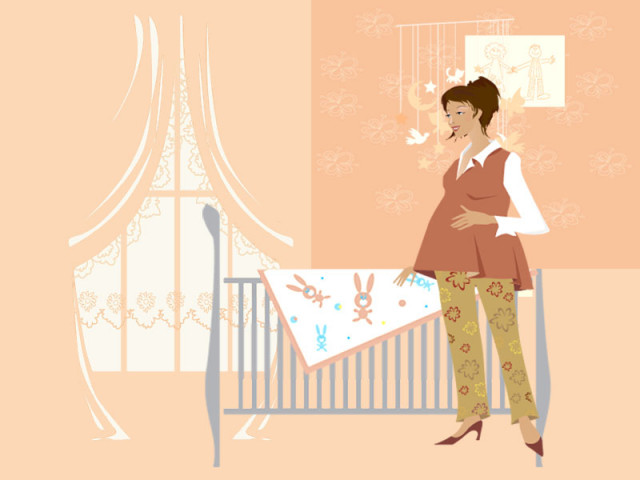Parenting guide: Of heels, toddlers and sleeping habits
Is your toddler finding his way into your bed every night? Also: should you put on those stilettos during pregnancy?

Parenting guide: Of heels, toddlers and sleeping habits
Is your toddler sleeping in your bed because they are scared of the beastly monsters that will haunt them at night?
According to the National Sleep Foundation, US, over 24% of parents make their children sleep with them. This is mainly because parenting newbies want to enjoy that time cuddling with their infants or want to take the path of least resistance and at least enjoy some sleep if not much. While other parents may not welcome this habit at all, it still persists because a parents’ bedroom is a safe haven for kids especially after the sun sets and those illusions of dark monstrous creatures start creeping in.
In order to stop your child from being overly dependent and help you reclaim your bed so that you can spend some quality time with your hubby, ‘Parenting’ suggests some tips that can help your little monster adjust:
• Before you implement the change, set the scene gradually. Make your child aware of your expectations for the night, that is, how kids are suppose to sleep in their own bedrooms and parents in their own. Justmommies.com also recommends that you make the ‘room-switching’ an exciting venture for the little one. Let them pick out the bed and personalise it. Making a picture book that focuses on the importance of sleeping in your own room can also be effective.
• Once you have made the decision of making your kid go it alone, sleeping needs to end entirely without any five-minute snuggles or water breaks. No matter how many tantrums they throw, remain persistent and make your sleep routine as boring as possible for them. Don’t worry over the few sleep-deprived nights, you will eventually get your precious sleep.
• Every time your child wakes you up walk them to the bedroom instead of giving up and making them sleep with you. Motivate them with rewards. Every kid enjoys little prizes so surprise them with a small treat the morning after.
Ending a consistent habit like co-sleeping will take more than one tactic to finish off. Don’t assume that your kid will stop sleeping with you overnight. It’s a gradual process and may take up to a few weeks but a few sleepless nights are worth it.
Four activities to help your older kid bond with the baby
1. Older kids like to help around with a newborn baby because it is an exciting new addition to the family and more or less a toy for the older one to play with. Let them experience the fun and help out with baby’s cleaning, brushing and other daily errands.
2. A family that eats together, stays together. Make them all sit together for dinner and eat. The little one might still have a long way to go before they can give their input on a family discussion but it’s the presence that will actually make the difference and form a habit.
3. Allow the older one to take charge. Older siblings like to enjoy their status. Make them responsible for helping the little one read and learn.
4. Take them shopping together. Shopping for their favourite toys and clothes is rewarding for every child. Ask the older one to choose something for the baby or make it an exciting deal for the bigger one when the younger infant points at something they want.
Is it safe to wear heels during pregnancy?
Every woman loves a pair of sexy, killer heels that make her look fabulous but as much you want to make a fashion statement, putting on that pair of stilettos might not be the best idea once that belly starts protruding.
Pregnancy is a period of many physical and chemical transformations, from weight gain to hormonal surges. According to Baby Med, hormonal changes during pregnancy cause ligaments to loosen throughout the body, including the area around the legs, ankles and feet. Hence, walking steadily while wearing high heels becomes significantly uncomfortable. Also, as your tummy grows, the centre of gravity of your body shifts forward (i.e. in front of you), making you arch your back. Wearing high heels also makes you arch your back to keep balanced, hence a combination of the two can wreak havoc on your back. High heels also tend to put pressure on the front foot thus making you more susceptible to falling. As if that wasn’t enough, one of the major highlights of the second and third trimester is a condition called oedema: swelling of the ankles and feet — and you don’t want to be wearing strappy sandals when that’s happening.
While wearing heels may not be a big deal in the first trimester, in the second and third trimester it entails a serious risk of injury and lasting harm to your back. That doesn’t mean that you should be strolling in flats or flip flops, however– some support for your arch is necessary, and according to Heidi Murkoff, author of What To Expect When You’re Expecting, a two-inch wide heel may be best for your feet.
So stop using Kim Kardashian to justify your choice in shoes while you’re pregnant and instead of lusting after heels, treat your feet to some relaxing pedicures!
Published in The Express Tribune, Ms T, March 17th, 2013.
Like MsT on Facebook for your dose of girl talk.



















COMMENTS
Comments are moderated and generally will be posted if they are on-topic and not abusive.
For more information, please see our Comments FAQ